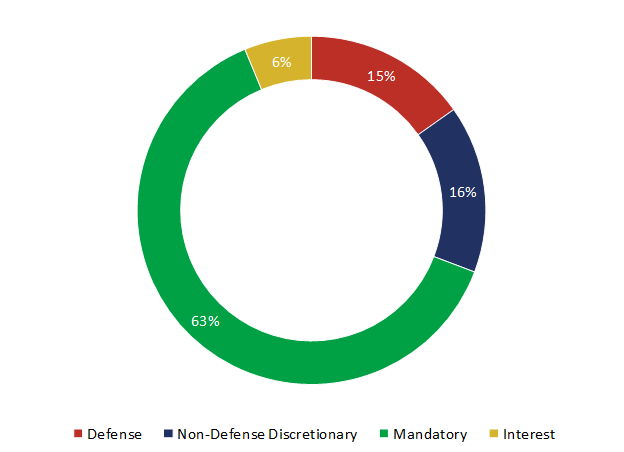Insight
February 6, 2018
Deconstructing the “Parity Principle”
Executive Summary
- Congressional progressives are demanding parity for non-defense discretionary spending in formulating relief from “sequestration” under the Budget Control Act (BCA).
- Parity does not reflect the budgetary reality that defense discretionary spending bore one-half of BCA cuts, while non-defense discretionary spending bore only one-third.
- Congress should jettison the baseless “parity” argument and fund programs based on national priorities.
During negotiations over government funding, President Obama demanded that defense and non-defense discretionary spending receive the same amount, or “dollar for dollar,” of budget relief from spending restrictions imposed by the Budget Contract Act (BCA). The architecture of the laws Congress passed to allow spending above the BCA’s restrictions, notably the Bipartisan Budget Acts of 2013 and 2015, reflected this demand. Today, congressional progressives appear to be demanding the same parity for defense and non-defense discretionary spending under President Trump.
But the “parity principle” never reflected budget reality. Instead, the dollar-for-dollar increases in defense and non-defense discretionary provided outsized relief to non-defense discretionary spending accounts.
President Obama signed the Budget Control Act into law on August 2, 2011. The BCA reinstated caps on discretionary spending, and imposed an additional mechanism to reduce the deficit by $1.2 trillion (including interest costs) over and above the initial reductions imposed by the BCA discretionary caps – a mechanism variously referred to as the “Joint Committee Reductions,” “Automatic Spending Reductions,” or more colloquially as simply “the sequester.” In practice, these additional spending reductions are enforced through spending caps (reduced beyond the BCA’s initial caps) on defense and non-defense discretionary spending, and an annual cancellation of mandatory spending. These spending restrictions were designed to fall evenly on defense and non-defense spending.
The first problem with this design is that federal spending looks nothing like an even division between defense and non-defense programs. Rather, national defense spending comprised 15 percent of federal spending in FY2017. Of the remaining 85 percent of the budget, 63 percent is mandatory spending – dominated by Medicare, Medicaid, Social Security, and ACA payments – 16 percent is non-defense discretionary spending, and 6 percent is interest on the national debt. Accordingly, about 79 percent of federal expenditures are devoted to non-defense programs. The chart below illustrates this division of federal spending.
Shares of Federal Expenditures in 2017
A spending enforcement mechanism that reflected the proportional composition of federal spending should thus fall heaviest on mandatory programs, and only reduce defense and non-defense discretionary spending by their much smaller shares of federal outlays. But the BCA’s spending enforcement mechanism, or “sequestration,” gets this backwards. Under the law, the automatic enforcement mechanism imposed 9 years of $110 billion in spending reductions each year, evenly split between defense and non-defense spending, cutting defense discretionary spending by about $55 billion per year. The non-defense spending reduction is split – but not evenly – between non-defense discretionary spending and mandatory spending, with reductions of about $37 billion and $17 billion, respectively. Thus, 50 percent of the automatic spending reductions are imposed on the defense discretionary spending that makes up 15 percent of the budget, while 34 percent falls on non-defense discretionary spending, and 16 percent falls on the mandatory spending that comprises 63 percent of federal spending. This is the exact opposite of what a proportional spending reduction should look like.
This imbalance in the BCA’s design is essential context in evaluating congressional progressives’ insistence on a dollar-for-dollar increase in defense and non-defense discretionary spending. In this demand, progressives are seeking disproportionate relief for non-defense discretionary funding. Proportional relief against sequestration would provide, for every additional dollar in defense funding, 68 cents to non-defense discretionary programs, and 32 cents to mandatory spending. Instead, Congressional Democrats want to disproportionately “plus up” the domestic discretionary accounts and count the mandatory savings.
Going forward, Congress should jettison the baseless “parity” argument. Instead, lawmakers should provide adequate funding to national priorities – defense and non-defense alike – apart from such artificial and unhelpful rhetorical constructs, and refocus budget savings on mandatory programs.











